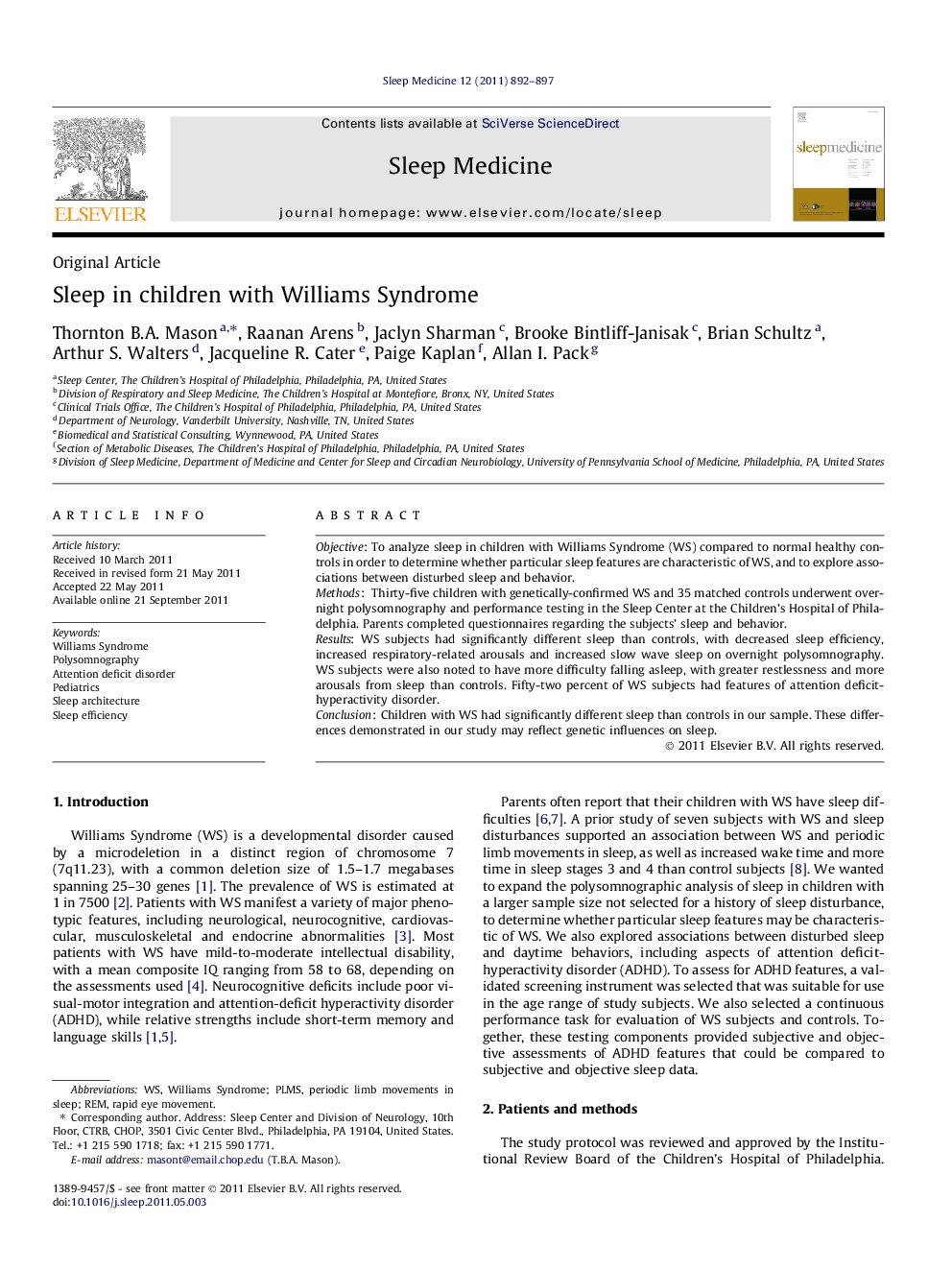| Article ID | Journal | Published Year | Pages | File Type |
|---|---|---|---|---|
| 3176707 | Sleep Medicine | 2011 | 6 Pages |
ObjectiveTo analyze sleep in children with Williams Syndrome (WS) compared to normal healthy controls in order to determine whether particular sleep features are characteristic of WS, and to explore associations between disturbed sleep and behavior.MethodsThirty-five children with genetically-confirmed WS and 35 matched controls underwent overnight polysomnography and performance testing in the Sleep Center at the Children’s Hospital of Philadelphia. Parents completed questionnaires regarding the subjects’ sleep and behavior.ResultsWS subjects had significantly different sleep than controls, with decreased sleep efficiency, increased respiratory-related arousals and increased slow wave sleep on overnight polysomnography. WS subjects were also noted to have more difficulty falling asleep, with greater restlessness and more arousals from sleep than controls. Fifty-two percent of WS subjects had features of attention deficit-hyperactivity disorder.ConclusionChildren with WS had significantly different sleep than controls in our sample. These differences demonstrated in our study may reflect genetic influences on sleep.
